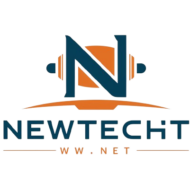We often face problems in our organization’s health care system and want a better way to manage patient data. Our healthcare system is constantly evolving to improve the quality of patient care, reduce overall costs and medical errors, and make it more effective for the end user. Old-fashioned pen and paper are disappearing, and we are gradually moving to more sophisticated electronic medical cards.
Presentations: Lucin Kenderjian is a registered nurse I have been working as a registered nurse for over 9 years and now work in several hospitals; I can tell you that health care has certainly made progress. We are constantly making changes every day to improve our systems and make them more efficient and safe for patients and staff. We have been using an electronic medical card called Meditech at The Children’s Hospital of Central California for several years, adding and deleting programs to make it more useful and effective.
Sometimes it is difficult to change the life of those who are used to doing the same. It is scary and unpleasant, but over time we all get used to and learn to adapt. We are constantly refining Meditech, but we still have problems with how we handle referrals. We don’t have a system to track our referrals, and often our patients re-enter the hospital because of missed appointments, or they haven’t been called back from the doctor’s office, or they don’t have PMD. We place our referrals in Meditech in the hope that patients will be notified of appointments, but often the attending physician does not monitor them, which delays the patient’s treatment, prolongs hospital stays and, in turn, increases costs. For for-profit hospitals, these delays may mean that they do not receive reimbursement, so we end up helping the patient for free.

I spent several hours in one of our clinics with the referral coordinator Martha, an appointed employee, who exchanges referrals daily. I saw her frustrated when she expressed concern about the process. Even though we switched to DME, we still make paper copies. Her day consisted of hours and hours of faxing back and forth, tracking phone calls to make sure the fax arrived, making appointments, faxing forms, calling doctors to check for missing information, waiting for a call from the referral. A doctor who scans piles of papers, organizes and distributes them for eight hours a day every day is timising and prone to errors. During our interview with Martha, she said she would like to have more time for other things, such as more patient care; perhaps his work would not have been so monotonous and tedious.
We thought there must be a better way. What about patient privacy? What if a fax is sent to someone else with the patient’s personal information in accordance with HIPPA rules? Delay the patient’s treatment; Is it possible to use the amount spent on mismanagement of referrals to pay higher salaries to staff or to reduce patient health costs? What about patients’ health?
The current paper process is not cost-effective, safe or easy to manage for our employees. These are the questions that come to my mind.
Personal family experience using paper reference forms I had experience with my loved ones at the doctor’s appointment, when we had to wait a few weeks before seeing the doctor. Before prescribing her surgery, the therapist referred my grandmother to three different specialists. After several visits to the offices of different doctors, I still had to make several phone calls to contact each doctor to make sure that they returned their contact details to the surgeon so that she could plan her surgery.
The connection between them was lost, they lost his files. When I called the surgeon’s office to find out about the status, the nurse told me that we were still waiting for them to fax the test results before we could proceed.
I called the urology clinic and got another answer. We were told that she needed another appointment for another test, which was scheduled from the previous admission but was not held, and they would not have a record for another three weeks unless they were cancelled. I was very upset.
My grandmother wanted to do this surgery as soon as possible because she could no longer bear the pain, and now we learn that she will be held up even more. As a nurse, I felt helpless and frustrated by the system, but there was nothing I could do but call and contact a doctor to make sure everything was done. If a referral system was available in which all this could be done electronically, patients would receive better care, doctors could communicate better and work more efficiently. 200,000 patients die each year in the United States as a result of inaccurate or covert referrals to specialists.
Most U.S. health care providers continue to use outdated facsimile and triple forms to send referrals. We need to raise awareness of new technologies, such as e-direction manager, to improve it for patients and the staff who manage the referral process.
